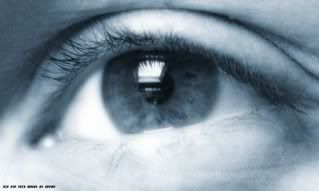profile
DOPT/FT/1B/04
Natalie Boey Mei Yern (0941716)
Lim Hui Lin (0941323)
Emily Tee Jia Qi (0941378)
Chua Mei Qi Maggie (0941451)
Joyce Oh Swee Ting (0941521)
 |
|
|
profile DOPT/FT/1B/04 Natalie Boey Mei Yern (0941716) Lim Hui Lin (0941323) Emily Tee Jia Qi (0941378) Chua Mei Qi Maggie (0941451) Joyce Oh Swee Ting (0941521) |
|
|
Friday, January 1, 2010 @ 6:42 PM
Adies Tonic Pupil Adies tonic pupil which is also known as Adies Holmes Syndrome (HAS), is a neurological disorder affecting the pupil of the eye and the autonomic nervous system. The characteristic of this disease is that one eye’s pupil is larger than normal and constricts slowly in bright light, along with the absence of Achilles Tendon. HAS is the result of viral and bacterial infection which causes inflammation and damage to the neurons of ganglion cells – an area of the brain that controls eye movement and spinal ganglion - an area of the brain involved in the response of the autonomic nervous system. HAS begins gradually in one eye, and often progresses to involve the other eye. At first, it may only cause the loss of deep tendon reflexes on one side of the body, but then progress to the other side. People with the syndrome may also show symptom of excessive sweating. The condition is most commonly seen in young women.Doctors may prescribe reading glasses to compensate for impaired vision in the affected eye, and pilocarpine drops to be applied 3 times daily to constrict the dilated pupil. Holmes-Adie syndrome is not life-threatening and do not affect your normal lifestyle, thought the loss of the deep tendon reflexes is permanent. On the other hand, some of the symptom of this disorder may progress. In most cases, pilocarpine drops and glasses will help patients to improve vision. reference: www.medications.com/conditions/adies-pupil 0 comments Wednesday, December 30, 2009 @ 8:33 AM Pupillary Pathway 
Afferent Pupillary Light Pathway:
The afferent pupillary light pathway begins in the retinal receptor cells and passes through the optic nerve. Light that hits on the rods and cones are project to the bipolar neurons which project to the ganglion cells which enter the optic chiasm. Rods and cones are sensitive to wavelengths from 400-700 nm which is the wavelength of light. Pupillary fibers follow the optic tract (posterior third of the optic tract) and separate from the optic tract just anterior to the lateral geniculate body. Optic tract carries light impulses in between the lateral and medial geniculate bodies to the pretectal nucleus. They then enter the midbrain, where they synapse to pretectal nucleus. Thus, the optic tract carries pupillary fibers from both eyes, and the tectotegmental tract carries pupillary fibers from both pretectal nuclei. Pupillary fiber arrangements cause both pupils to constrict in the consensual light reflex. Efferent Pupillary Light Pathway: Parasympathetic Pupillary Pathway The efferent pupillary light pathway sets in motion at the Edinger-Westphal (E-W) nuclei. This is located on the dorsal aspect of the 3rd cranial nerve nucleus in the anterior dorsal mesencephalon at the level of the superior colliculus. Efferent pupillary fibers from the E-W nuclei are carried in the superficial layer of the 3rd cranial nerve to the cavernous sinus. Ultimately, the efferent pupillary fibers end in its inferior division, where they pass through the superior orbital fissure and synapse in the ciliary ganglion. When evaluating patients with third cranial nerve palsy, the efferent pupillary fibers that anatomically located superficially on the 3rd cranial nerve, becomes critical. It is clinically important to know that the pupillary fibers are located superficially between the brain stem and the cavernous sinus. Finally, postganglionic parasympathetic pupillary fibers synapse and pass through the short ciliary nerves to the iris sphincter and ciliary muscles. 93% to 97% of these parasympathetic fibers supply the ciliary muscles and 3 % to 7 % of the remaining supplies the iris sphincter muscles. The short ciliary nerves carrry parasympathetic and sympathetic pupillary fibers. Cited from Google images: http://instruct.uwo.ca/anatomy/530/vistopo.gif Cited from: http://www.pacificu.edu/optometry/ce/courses/19433/pupilanompg1.cfm#Pupillary (Collage of Optometry)
0 comments Saturday, December 26, 2009 @ 11:18 PM Results First measure the size of pupil for both eyes under photopic condition. After which observe the shape of the pupil.  Next, measure the size of the pupil of both eyes under scotopic condition  After which, do the consensual reflex test by placing a pentorch below the eye of the subject. The pupil of the eye where the pen torch would constrict. Observe the consensual reflex on the other eye. Following which, do the swing flashing test by placing the pentorch on one eye and count till 3. Next place the pen torch on the other eye and count to 3. Keep alternating the light on both eyes. Observe the constriction and dilation of the pupil. Lastly, do the accomodation test. Get the subject to focus on something at far. Place an object in front of the subject. Ajust the position of the object from front to back, and back to front. Observe the pupil constriction and dilation while accomodating. The results should be recorded in the PERRLA form. Ena Lim 4/12/09 3.50pm S: 6mm P: 3mm O 3++ Yes P E R R L A O 3++ Yes S: 6mm P: 3mm Consensual reflex: yes Swing Flash Light Test: constrict and dilate Accommodation: constrict and dilate Natalie Boey 4/12/09 4.10pm S: 5mm P: 3mm O 3++ Yes P E R R L A O 3++ Yes S: 5mm P: 3mm Consensual reflex: yes Swing Flash Light Test: constrict and dilate Accommodation: constrict and dilate 0 comments |
|